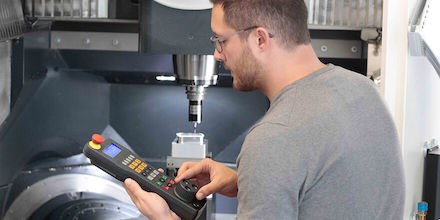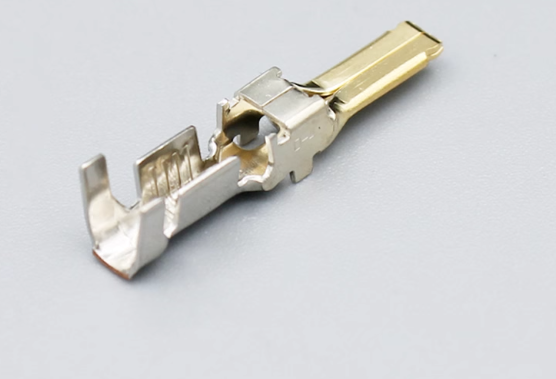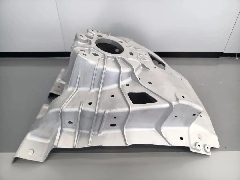5 Common Mistakes When Using CNC Machines
【Introduction】 Spend enough time on the shop floor and you will see some of the same mistakes time and again.
When CNC machines are properly used, they are flexible, productive, long-lasting and safe. A misused machine or a mishandled application can have just the opposite results.
Typically, the most egregious offenses should be obvious and easy to avoid, but not all serious issues are easy to spot. The issues presented here are commonly missed by operators and can cause big problems for your CNC environment.
1. Selecting the wrong tooling style for CNC lathes
Most cutting tools are available in right- and left-hand versions. The most obvious effect of tooling style is on spindle direction, but a lesser-known impact applies to CNC lathes when powerful machining operations like rough turning, facing or boring are involved.
When performing a powerful machining operation, you must confirm that the force of the operation is driven into the machine’s direction of support. Doing so will stabilize the process and ensure that the machine will continue to provide adequate support for years to come.
If you run the wrong “hand” of tooling versions, the force of the cutting operation will pull the way system apart. The only support will come from the integrity of components comprising the way system, which will degrade over time and bring about play in the way system. Eventual symptoms could include sizing issues, degraded surface finishes and chatter.
2. Mishandling bar applications on CNC lathes
Bar operations involve machining a part, cutting it off, feeding the bar and running the next part. When a company is faced with a bar application for the first time, and especially if it does not foresee similar jobs coming up in the future, it may understandably try to minimize costs. Instead of using an expensive bar feeder, it might try to utilize an inexpensive bar puller held in one of the tool stations. With bar feeders, the bar is fully enclosed and supported within the bar-feeding device. With bar pullers, the only support for the bar will be the spindle itself.
Depending on the diameter of the spindle hole and that of the bar, the spindle may not allow the bar to flex within the spindle during machining. The faster the spindle speed in revolutions per minute, the more bending stress will be placed on the bar. Again, most bar-pulling applications work nicely if the bar is not so long that it exits the rear of the headstock/spindle. If it does by even a small amount, the rotational stress will bend the overhang by 90 degrees. If the bar hangs out far enough, it will mangle the spindle motor and anything that gets in its way.
3. Ignoring M codes
Most M codes are like programmable on/off switches: spindle on/off, coolant on/off, door open/close, etc. If the machine has accessories like a special coolant system, rotary table or chip conveyor, M codes are likely involved with each.

A thorough understanding of M codes will protect your CNC machine from unnecessary wear and tear.
Without a thorough understanding of every M code, a programmer may unwittingly cause issues with machine longevity. Many rotary axes, for instance, incorporate clamping systems that secure the rotary axis in place when necessary during powerful machining operations. This requires programmers to use an M code to clamp the rotary axis prior to machining. If the programmer is unaware of the clamping M code, the clamp will not engage, and undue stress will be placed on the rotary axis.
4. Programming around machine problems
I have seen all manner of remedies employed to keep a needed CNC machine in production, even if it had serious maintenance-related issues. Misaligned turning center headstock after a crash? The operators programmed tapering movements for straight diameters to compensate for the misalignment. Bad check-valve in the coolant system? They included a multi-second dwell after turning on the coolant to allow time for the coolant to flow at its maximum rate. Accessory devices without confirmation signals? Operators programmed a dwell command to allow the device time to complete its activation.
No machine issue will correct itself. The problem will almost always degrade and cause serious issues.
5. Inappropriately manipulating critical functions
A lot of engineering goes into every CNC application. While there may be some flexibility for certain aspects of the application, operators must always adhere to the guidelines you have implemented — and most do. However, I have seen operators manipulating functions they should not.
For instance, there are operators who increase or decrease feed rate and spindle speed override functions. While there are appropriate reasons for operators to use these functions, they may instead be increasing these functions just to make parts faster or decreasing them to keep from having to work so fast or hard. In one company I visited years ago, the operator had turned the feed rate override switch to 150%, removed the switch pointer and replaced it in the 100% position. To any onlooker, it would appear the feed rate override switch was set to 100%.




